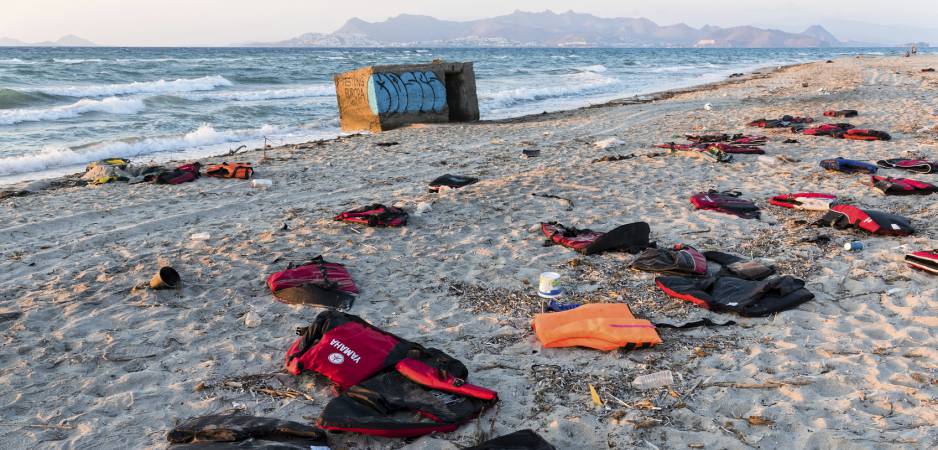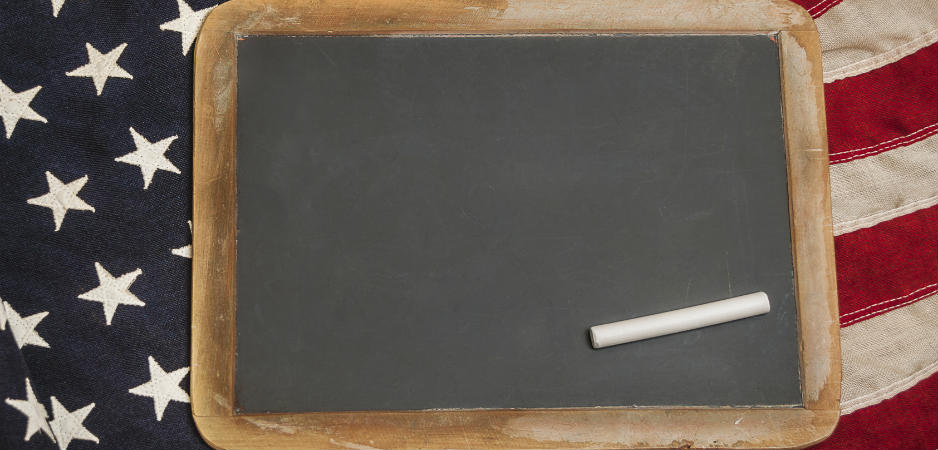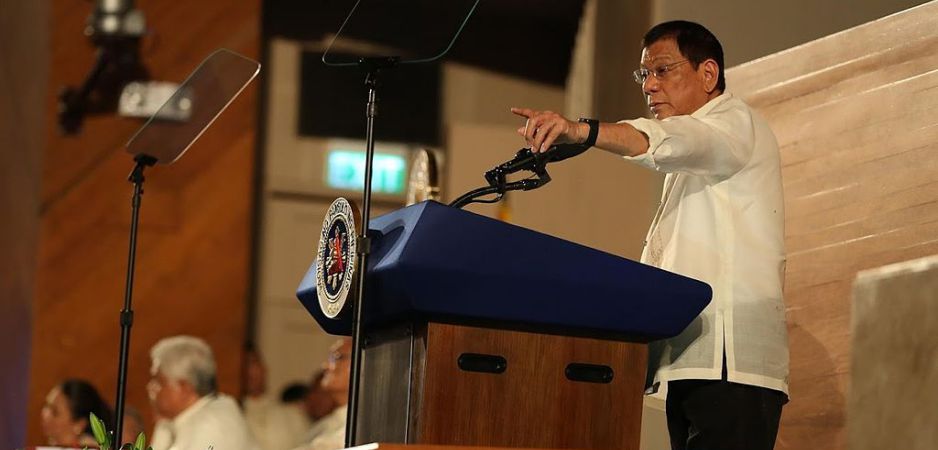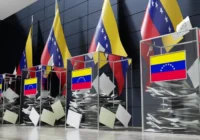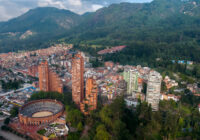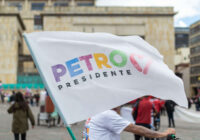A ceasefire between Colombian forces and FARC brings 52 years of civil war to a close thanks to a reformist president and assistance from Cuba and the US.
Every week throws a cornucopia of events. This writer struggles with the abundance of choice. After all, Donald Trump went to Mexico, Dilma Rousseff was formally booted out of office, Gabon had a not so free election, and the European Commission (EC) ordered Ireland to recover €13 billion ($14.5 billion) from Apple.
The EC’s Apple decision is historic. It holds that Ireland broke rules on state aid by giving illegal tax benefits to selected companies. This decision raises questions about sovereignty, legality, fairness and more. In an earlier edition of The World This Week, this author examined the taxes that Apple does or does not pay. Needless to say, taxation is a tricky and thorny issue in the modern global economy.
Ireland, a tiny country of about 4.6 million people, has attracted companies to its shores through a seductive mix of light regulations and low taxes. This decision threatens its economic model. Naturally, the country “disagrees profoundly with” the EC and is likely to take the matter to the European Courts.
Like EC’s decision, Gabon’s election is historic. The Bongo clan has ruled this oil-rich coastal state since 1968, when protests erupted all the way from Prague and Belgrade to Paris and New York. Now, protests have broken out in Gabon after a rather fishy election. Yet the fact that people voted and are now protesting is historic. Democracy is deepening bit by bit in a continent that was once the cradle of humanity.
In the eyes of this author, the most significant development this week is the ceasefire between Colombian security forces and Fuerzas Armadas Revolucionarias de Colombia (the Revolutionary Armed Forces of Colombia), or FARC. This ends 52 years of a bloody and brutal civil war that has torn the country apart. As per a report by Centro Nacional de Memoria Histórica, this protracted conflict has left 220,000 people dead, caused 25,000 to disappear and displaced 5.7 million.
Like many conflicts, the origins of the Colombian civil strife lie deep in the past. As Eduardo Galeano eloquently writes in the Open Veins of Latin America, “Renaissance Europeans ventured across the ocean and buried their teeth in the throats of the Indian civilizations.” From the early days, Spanish conquistadores looted gold, silver and anything valuable that they could lay their hands on.
In an earlier edition of The World This Week, this author referred to a contemporaneous record of early conquistadores by Bartolomé de las Casas about the horrors that devout Christians inflicted on pagan natives in what is now known as Cuba. These formidable Spaniards rejected a local chief’s offer of land and gold to attack his people, ship him off as a slave to Castile and rape his wife.
This story was repeated throughout Latin America, and Colombia was no exception. Most people with property rights tend to be of European descent. Even among them, it is the descendants of the conquistadores who sit at the top of the food chain with the most wealth and land.
Latin America’s current social stratification owes its origins not only to bloody conquest, but also to the lovely casta system introduced by the Spanish. As per this system, even those with 100% European blood such as the legendary criollo Simon Bolivar were inferior to those born in the Iberian Peninsula. The proud Bolivar was unable to accept such second-rate status.
In his brilliant Jamaica Letter, he rejected the position of “serfs destined for labor.” Bolivar did not want Latin Americans to become “mere consumers” of Spanish products. He damned a future that involved merely “the cultivation of the fields of indigo, grain, coffee, sugar cane, cacao, and cotton; cattle raising on the broad plains; hunting wild game in the jungles; digging in the earth to mine its gold” for the insatiable greed of Spain.
Yet this has been the future of Latin America. The region still remains a producer of commodities. Spain was succeeded by the US and the gringos in turn have been replaced by the Middle Kingdom. Over the last few years, the economic boom in Latin America was sustained on the backs of ravenous Chinese demand for the likes of Chilean copper, Brazilian soybeans and Uruguayan beef.
As per the World Economic Forum, Latin America continues to be the world’s most unequal region. In 2014, the richest 10% of people in Latin America owned 71% of the region’s wealth. This author has long been uneasy with quantitative easing that is boosting asset values such as Facebook shares and property prices, exacerbating the already egregious levels of inequality. In Latin America the increasing inequality promises to reach explosive proportions. As per Oxfam’s calculations, the current trends will lead to the richest 1% owning more wealth than the remaining 99%.
Bolivar’s words describing the social stratification of his land ring rather true today: “In Colombia there is an aristocracy of rank, office and wealth, equivalent by its influence, its pretensions and its pressure on the people, to the most despotic aristocracy of titles and birth in Europe. Included in the ranks of this aristocracy are the clergy, professional groups, lawyers, the military and the rich. In spite of all their liberalism, they prefer to regard the lower classes as their perpetual serfs.”
 Fair Observer provides you deep and diverse insights for free. Remember that we still have to pay for servers, website maintenance and much more. So, donate now to keep us free, fair and independent.
Fair Observer provides you deep and diverse insights for free. Remember that we still have to pay for servers, website maintenance and much more. So, donate now to keep us free, fair and independent.
Naturally, such a history of violence, oppression and exploitation leads to a reaction. The country has experienced civil war in one form or another for well over a century. This author first learnt about Colombia’s conflicts through the magic realism of Gabriel García Márquez’s 1967 masterpiece, One Hundred Years of Solitude. This novel refers to the Thousand Days’ War between the conservatives and the liberals. The former favored a strong central government, limited voting rights and strong links between church and state. The latter wanted stronger regional governments, universal voting rights and a division between church and state.
The Thousand Days’ War lasted from 1899 to 1902 and resulted in about 100,000 deaths at a time when the country’s population was less than 4 million. The conservatives triumphed but did not enjoy the fruits of their victory for long. “Rough Rider” Teddy Roosevelt was leading Uncle Sam on its march to great power status and the Panama Canal was an essential part of his plans. So, Roosevelt supported Panamanian independence. In 1903, Panama emerged as a new country, depriving Colombia of a strategic and valuable strip of land.
Even as Colombia lost Panama, the tension between conservatives and liberals continued to simmer. In the 1940s, the tension erupted into outright civil war that was fought mainly in the rural countryside. La Violencia, as this conflict came to be known, led to the murder of 200,000 Colombians in 20 years, a greater figure than the casualties in the Korean War. It is important to bear in mind that this conflict is different to the more recent civil war between the government and FARC.
A Colombian friend of this author remarked that the latest civil war was merely old wine in a new bottle. Such has been the scale of inequity in the country that some feel compelled to rebel. Violence is a way of life with the oppressors seizing land and resources with impunity and some victims reacting with savage ferocity to become new oppressors as they taste blood. Tragically, the differences between different sections of society seem almost irreconcilable, and conflict has been a part of Colombia’s DNA for much too long.
FARC was born after Catholic conservatives crushed reformist liberals during la Violencia. Triumphant in its victory, the conservatives unleashed a form of violence greater than the 200,000 killings. This violence was borne out of the ideas of a Canadian-born American development economist named Lauchlin Currie, who owned some ranching land in Colombia.
Currie inspired the policy of Accelerated Economic Development (AED). As per this policy, large-scale industrial agriculture was deemed to be the path to development. The law of the land proclaimed an “efficient use of the land.” These seeming innocuous and innocent words were interpreted legalistically to dispossess hundreds and thousands of families of their land. Currie’s argument was that they were not using the land efficiently. Only industrial farms could compete in the global market, export crops or meat, and economically develop Colombia. Therefore, cattle ranchers and big farmers merrily chased small farmers off their land. The government then proceeded to provide them generous subsidies on top.
As usual, the disposed got nothing. Their land, resources and wealth were simply transferred to the rich. AED was the Colombian equivalent of the enclosures that took place in England. It was similar to what European settlers had done in North America and Australia. They had seized land from the natives on the doctrine of terra nullius, which stipulated that if natives were not using the land productively then it was “nobody’s land” and settlers were entitled to appropriate it.
As in England, the landless moved to cities, transforming “a mostly agrarian society into one of the most urbanized nations in Latin America.” Apart from destroying the social fabric, this violent transformation pushed wages down. Businesses profited while workers suffered. Malnutrition was rife, slums widespread, poverty extensive, disease rampant and Dickensian exploitation a way of life. Marxists like James J. Brittain and fund managers like Bruno del Alma agree on the draconian nature and terrible consequences of AED.
In a book published in 1984 by the right-leaning Hoover Institution of Stanford University on politics, policies and economic development in Latin America, Bruce Michael Bagley concluded that “subordinate ethnic (Indians, Blacks) and class (peasants, rural workers, the urban poor, and segments of working and middle classes) groups were systematically denied influence over state policy yet found themselves obliged to bear most of the costs of Colombia’s accelerated economic growth during the 1960s and 1970s.” Unsurprisingly, another rebellion broke out.
This time the rebellion was led not by liberals but by communists. Two organizations emerged: Ejército de Liberación Nacional (ELN) and FARC. Students, Catholic radicals and left-wing intellectuals comprised the former, while militant communists and peasant self-defense groups formed the latter. Although both ELN and FARC began as idealistic and ideological guerrilla movements fighting for land reform and greater equality, they gradually degenerated into armed gangs with a taste for power, wealth and blood. FARC emerged as the more deadly of the two.
 Subscribe to Fair Observer for $10 a month and we will gift you our e-publications and invite you to inspiring events.
Subscribe to Fair Observer for $10 a month and we will gift you our e-publications and invite you to inspiring events.
Like Naxalites in India and other rebel groups elsewhere, murder, extortion and kidnappings became a way of life for ELN and FARC. The latter started producing, taxing and trafficking cocaine to raise revenues to continue its armed struggle against the government. The US resolutely supported the Colombian government in Bogota against the communist terrorists during the Cold War. In 2000, the US unveiled Plan Colombia, an aid package “to help the country combat guerrilla violence, strengthen its institutions, and stem drug production and trafficking.”
Álvaro Uribe, an Oxford- and Harvard-trained lawyer of a landowning family, became president in 2002. During his time in power, he unleashed the full fury of the state on FARC. Between 2002 and 2007, homicides dropped by 40% and kidnappings by 80%. Uribe took on Ecuador and Venezuela for supporting FARC. Even Hugo Chávez, the Venezuelan strongman, backed down, pressured FARC to release hostages and finally called for it to disarm.
Uribe thankfully did not succeed in overturning the constitution and getting a third term. Another Harvard man, Juan Manuel Santos, took over in 2010. Santos was Uribe’s defense minister and the only Colombian president in recent history to have served in the military as a young naval cadet. Compared to Uribe, Santos has turned out to be a rather different kettle of fish. In 2012, he announced peace talks with FARC, which were to begin in Oslo, Norway, before moving to Havana, Cuba.
Santos has turned out to be a reformist president. In 2014, he backed same-sex marriage that the country’s highest court declared legal earlier this year. In a smashingly brilliant article in The Guardian, Santos declared: “[A]s Colombia’s leader, I know we must rethink the drugs war.” He boldly pointed out that this war “on most counts shows little progress if contrasted with the amount of time, blood and treasure invested by so many nations with a view to dismantling a business that remains as strong and active as it was half a century ago.” The peace deal with FARC is the crowning achievement for this reforming president.
Yet it is important to remember that this peace deal would not have been possible without the Cubans and the Americans making up and pitching in. Nick Miroff of The Washington Post has said the “Colombian peace deal could mark a rare victory for US diplomacy.” President Barack Obama has given Santos solid support and decent-sized checks. More checks are to follow. Pope Francis is also cheering the deal.
But Miroff wisely observes that “the history of peace-deal promises in Latin America is a muddy one.” There are many banana peels that lie ahead and, like all deals, this one is imperfect. Rather appositely, Colombians will vote on the deal on October 2, the birthday of Mahatma Gandhi.
The formidable Uribe is urging the voters to say no to the deal. He is unwilling to forgive FARC for its crimes and blames its fighters for the assassination of his own father in June 1983. Yet it is important to note that security forces and their allied far-right militias have been bloodthirsty too. Luis Moreno-Ocampo, the chief prosecutor of the International Criminal Court (ICC), pointed out that leftist guerrillas were responsible for 12% of the total killings, security forces 8% and the far-right militias a whopping 80%. A little forgiveness on all sides may go a long way.
Even more important to the prospects of long-term peace might be mitigating exploitation of the poor, providing public services and addressing the land question that has long bedeviled Colombian society. Colombia has the second highest concentration of land ownership in Latin America and this inequality is a chief cause of rural poverty, which in turn has led to civil war.
Bearing this mind, Colombia passed a law in 1994 to set an upper limit to the land a single person could be allotted by the state. Laws need enforcement, though, and a recent Oxfam report points out how Cargill, an infamous US multinational, has been violating this law. Between 2010 and 2012, Cargill used 36 different shell companies to acquire 39 properties to produce corn and soy.
This is madness. Colombia cannot afford yet more marginalization of the already marginalized. The country needs a more democratic distribution of land and a strengthening of the small-farm economy for peace to stand a chance.
*[You can receive “The World This Week” directly in your inbox by subscribing to our mailing list. Simply visit Fair Observer and enter your email address in the space provided. Meanwhile, please find below five of our finest articles for the week.]
Immigration is a Tale of Two Countries
Germany and Mexico must remain vigilant to prevent public perceptions from negatively impacting their asylum, refugee and migration policies.
Germany is facing the most important immigration crisis in its history since World War II. The recent attacks that took place on three consecutive days in Munich, Reutlingen and Ansbach broke the fragile peace that reigned in the country after the Islamic State-linked attacks in Würzburg and Hanover earlier this year. These unfortunate events, which are all regarded as part of the latest wave of terrorist attacks to hit Europe, have renewed criticism toward the open-door asylum policy that German Chancellor Angela Merkel has vehemently pursued and defended.
The fact that the state of Bavaria was the main point of entry for many refugees and the target of the recent attacks by asylum seekers has left a bitter feeling among Germans. Just months ago, German citizens had warmly welcomed refugees arriving on board the trains from Hungary following their… Read more
The Hajj and European Colonialism
The hajj has been shaped by interactions with Europe for several centuries. Though we don’t think of it this way, the hajj is very much a European affair.
The hajj, the annual pilgrimage to Mecca, is a central ritual of the Muslim faith and one of the largest and oldest gatherings of people in the world. Pilgrims perform the hajj over three days during the last month of the Muslim lunar calendar (the date shifts every year, in reference to the Gregorian calendar).
Pilgrims carry out a specific sequence of rituals at a constellation of sites, recalling activities of the Prophet Muhammad, Islam’s seventh-century founder. Unlike other major world pilgrimages, the hajj is obligatory. In making the pilgrimage to Islam’s holiest city—Muhammad’s birthplace and the site of God’s revelations to him—Muslims fulfill one of the five pillars of their faith. For Saudi Arabia, the modern state that is home to Mecca, the hajj is both a… Read more
Landscape of Inequality: How America Funds Public Schools
Amid an election full of outlandish statements, Twitter spats and ad hominem accusations, many important problems facing America have failed to grace headlines. In the third of a five-part series exploring issues ignored during the 2016 presidential election season, Ryan J. Suto addresses the inequalities in America’s public education funding.
During the opening battles of the 2016 presidential campaign, Bernie Sanders advocated for his plan to make higher education free at public colleges and universities nationwide, a plan that likely contributed to the senator’s wild popularity among a generation shackled with student debt.
A similar position was adopted a year later by eventual Democratic nominee Hillary Clinton in hopes of securing support among the same demographic. Republican nominee Donald Trump’s position on the topic largely opposes the federal government’s role in broadly subsidizing higher education.
While the discourse around higher education during this election has largely been substantive and important, it has all but ignored the 13 years… Read more
The Philippine “Punisher” Could Be a Man of Peace
How has Rodrigo Duterte fared as president of the Philippines 100 days after taking office?
Philippine President Rodrigo Duterte is hitting headlines for all the wrong reasons. He has threatened to pull the Philippines out of the United Nations (UN); he has ridiculed diplomats; he is unapologetic for making rape jokes; and the most serious case against him is his alleged involvement in the spate of drug-related extrajudicial killings across the country.
Yet this seemingly madman on the loose is also the same statesman who has brokered a landmark peace initiative with communist rebels barely two months after assuming the presidency. In fact, Duterte has already achieved what his predecessors in the past 30 years have failed or refused to do: Draft an indefinite ceasefire agreement with the group behind Asia’s longest-running insurgency.
So, how do we make sense of Duterte’s contradictory priorities? Is he a ruthless killer of petty drug lords who is intent on hiding his… Read more
In Greece, Syriza Jeopardizes Freedom of the Press
The Greek government has been taking steps that curb the country’s freedom of the press.
While outside media coverage of Greece this summer has focused on the migrants stranded at the gates of Europe, the far-left Syriza party continues to juggle the state’s astronomical debt and contentious negotiations over bailouts and harsh austerity measures.
The just-completed sale of new television licenses has become the latest battleground, as the government effectively forces some stations off the air through a new media licensing regime. While the government claims the policy will reduce media corruption and increase revenue, critics charge it is a blatant attempt to control the media for Syriza’s own political purposes. According to this narrative, the move is just the latest in a string of actions by Syriza to enhance its own power and weaken its opponents.
Over past several months, Prime Minister Alexis Tsipras and his party have taken several steps to shore up their position in… Read more
The views expressed in this article are the author’s own and do not necessarily reflect Fair Observer’s editorial policy.
Photo Credit: DC_Colombia
Support Fair Observer
We rely on your support for our independence, diversity and quality.
For more than 10 years, Fair Observer has been free, fair and independent. No billionaire owns us, no advertisers control us. We are a reader-supported nonprofit. Unlike many other publications, we keep our content free for readers regardless of where they live or whether they can afford to pay. We have no paywalls and no ads.
In the post-truth era of fake news, echo chambers and filter bubbles, we publish a plurality of perspectives from around the world. Anyone can publish with us, but everyone goes through a rigorous editorial process. So, you get fact-checked, well-reasoned content instead of noise.
We publish 2,500+ voices from 90+ countries. We also conduct education and training programs
on subjects ranging from digital media and journalism to writing and critical thinking. This
doesn’t come cheap. Servers, editors, trainers and web developers cost
money.
Please consider supporting us on a regular basis as a recurring donor or a
sustaining member.
Will you support FO’s journalism?
We rely on your support for our independence, diversity and quality.



